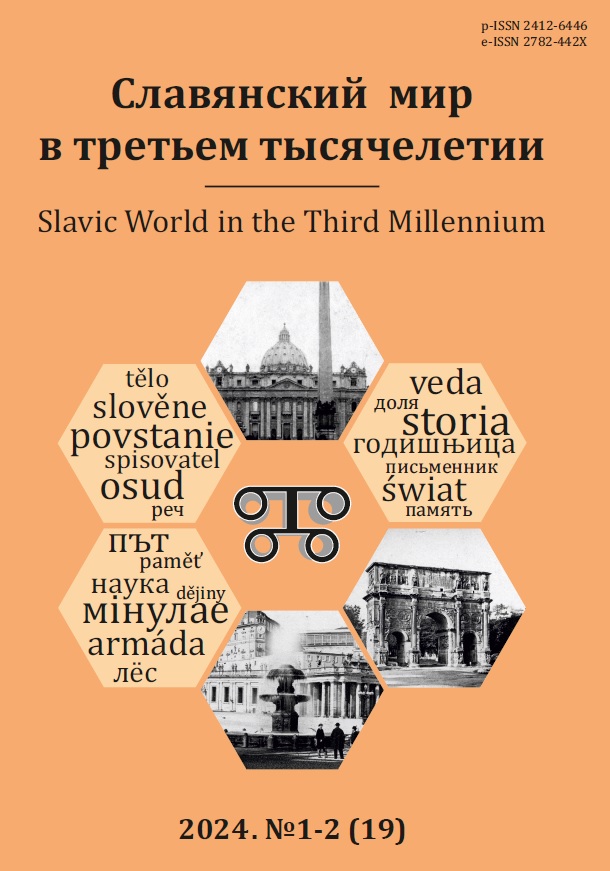The Proto-Slavic Name for the Gingiva: Difficulties of Reconstruction
DOI:
https://doi.org/10.31168/2412-6446.2024.19.1-2.07Keywords:
Proto-Slavic language, word formation, body part termsAbstract
Although in most Slavic languages gum is denoted by the descendants of a single Proto-Slavic word, the details of the reconstruction of this word remain a matter of debate, and a number of contradictory hypotheses can be found in the scientific literature. For the Proto-Slavic language those hypothesized forms are of both feminine and neuter genders with suffixes *-sna, *-sn, *-sno, *-sla, *-slo, with initial sounds *d- and *j-. A careful study of the material shows that the original form *dęsna (f.) should probably be recognised. The dissimilated variant *dęsla / *dęslo is probably comparatively ancient. The forms potentially derived from *dęsno and *dęsnь are most likely secondary and should not be considered Proto-Slavic. The first of them arose as a result of the reinterpretation of *dęsna as plurale tantum, probably under the influence of the semantically close word *usta 'mouth', which fits very well into the logic of the change of gender attested in some other designations of body parts in Slavic languages. The less widespread variant *dęsnь is explained by the influence of words with phonetically close auslaut (*basnь, *pěsnь, *plěsnь, *wasnь). The vocalism of the Russian form desna is preferably explained by the reflection of yekanye in writing. In several cases we also encounter folk etymology. The most common are designations with initial j-, apparently influenced by *ęzyk 'language'. As less favoured, the paper considers the hypothesis of phonetic origin of initial j-. Slovenian forms like dlẹ̑sen, dlésna and dlésno are most likely to be explained by contamination with the verb dlẹ́sniti 'to click'.
Received 9 April 2024
Revised 3 June 2024
Accepted 12 June 2024
For citation: Saenko, M.N., 2024. The Proto-Slavic name for the gingiva: difficulties of reconstruction. Slavic World in the Third Millennium, 19 (1–2), pp. 105–131. https://doi.org/10.31168/2412-6446.2024.19.1-2.07



